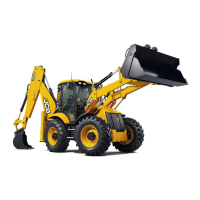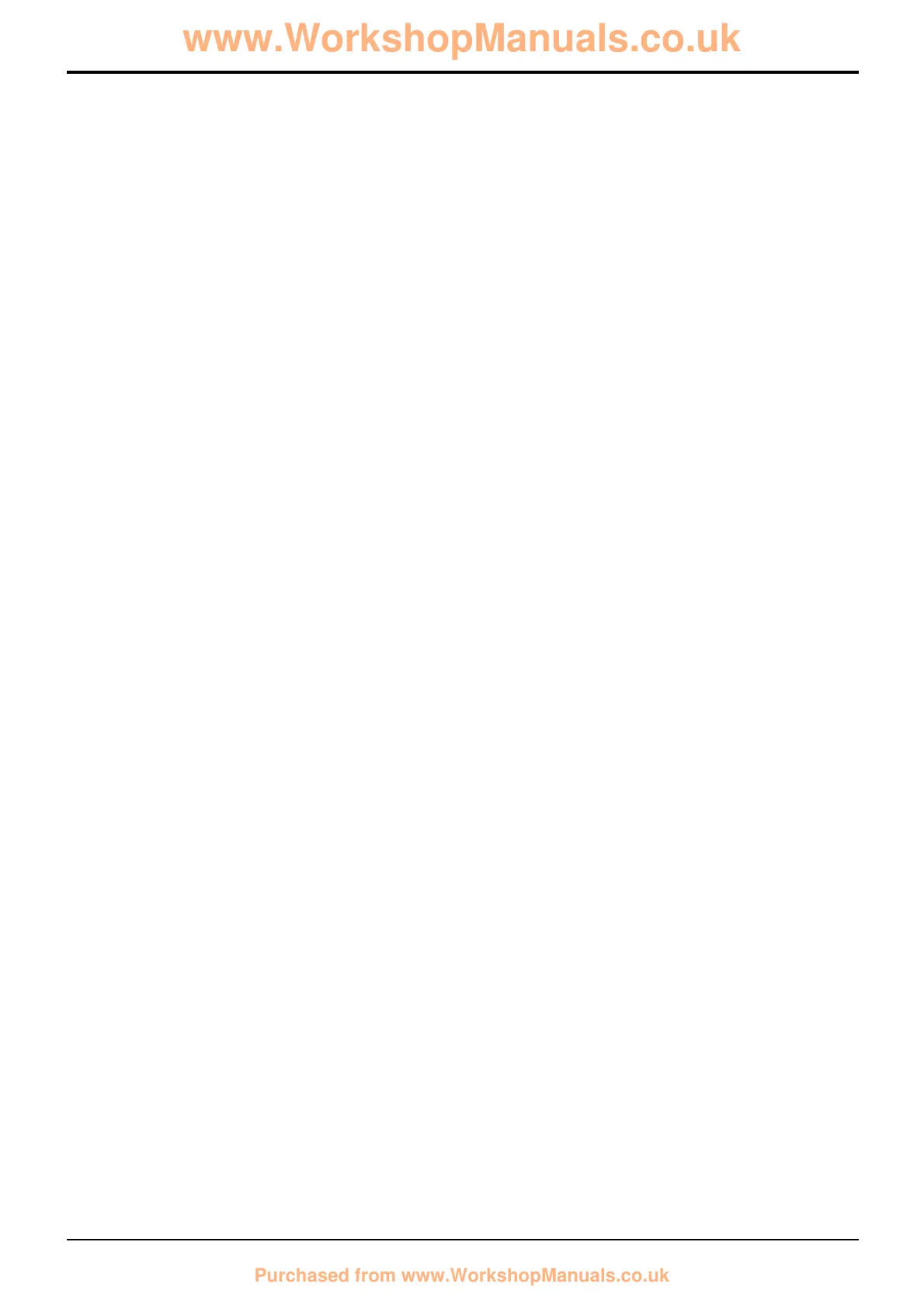Hydraulics
9803/3280 Issue 1
6 - 12 6 - 12
Circuit Descriptions
Section E Section E
Main Relief Valve (MRV) - Operation
Component Key:
A Main Plunger
B Valve Seat
C Spring
D Chamber
E Drilling
F Pilot Valve
G Spring
H Exhaust Gallery
1A Pump Inlet
3B Main Relief Valve
3D Shovel Ram Spool
The main relief valve (M.R.V.) 3B, situated in the loader valve
block, provides control of both loader and excavator
pressures.
1 Valve at Rest
The illustration 1 shows a loader service selected by spool
3D causing pressure to rise in the service line and back
through the loader valve to the pump via line 1A. The service
is operating under light load and the pressure is not
sufficient to cause any response in the M.R.V.
The main plunger A is held on its seat B by the combined
effect of spring C and the pump pressure which enters
chamber D through the small drilling E. Pump pressure
outside the chamber is not high enough to lift the plunger off
its seat.
2 Pilot Valve Opens
If, as shown in view 2, pump pressure rises high enough to
force the pilot valve F from its seat (against spring G), the
pressure in chamber D is vented into the exhaust gallery H.
Unless the pressure continues to rise, plunger A will remain
on its seat.
3 Valve Moves off its seat
In view 3, pump pressure at 1A has risen to the setting of
the main relief valve but pressure in chamber D has not risen
because the seat orifice of pilot valve F is larger than small
drilling E and oil is unable to fill the chamber as quickly as it
is being exhausted.
Pressure acting on the upper faces of main plunger A is
therefore greater than the combined force of spring C and
the pressure in chamber D. The plunger then moves off its
seat, allowing pressure to be released to the exhaust gallery.
As the pump pressure decreases, the pilot valve is able to
reseat and pressure in chamber D assists spring C to force
the main plunger A back onto its seat.

